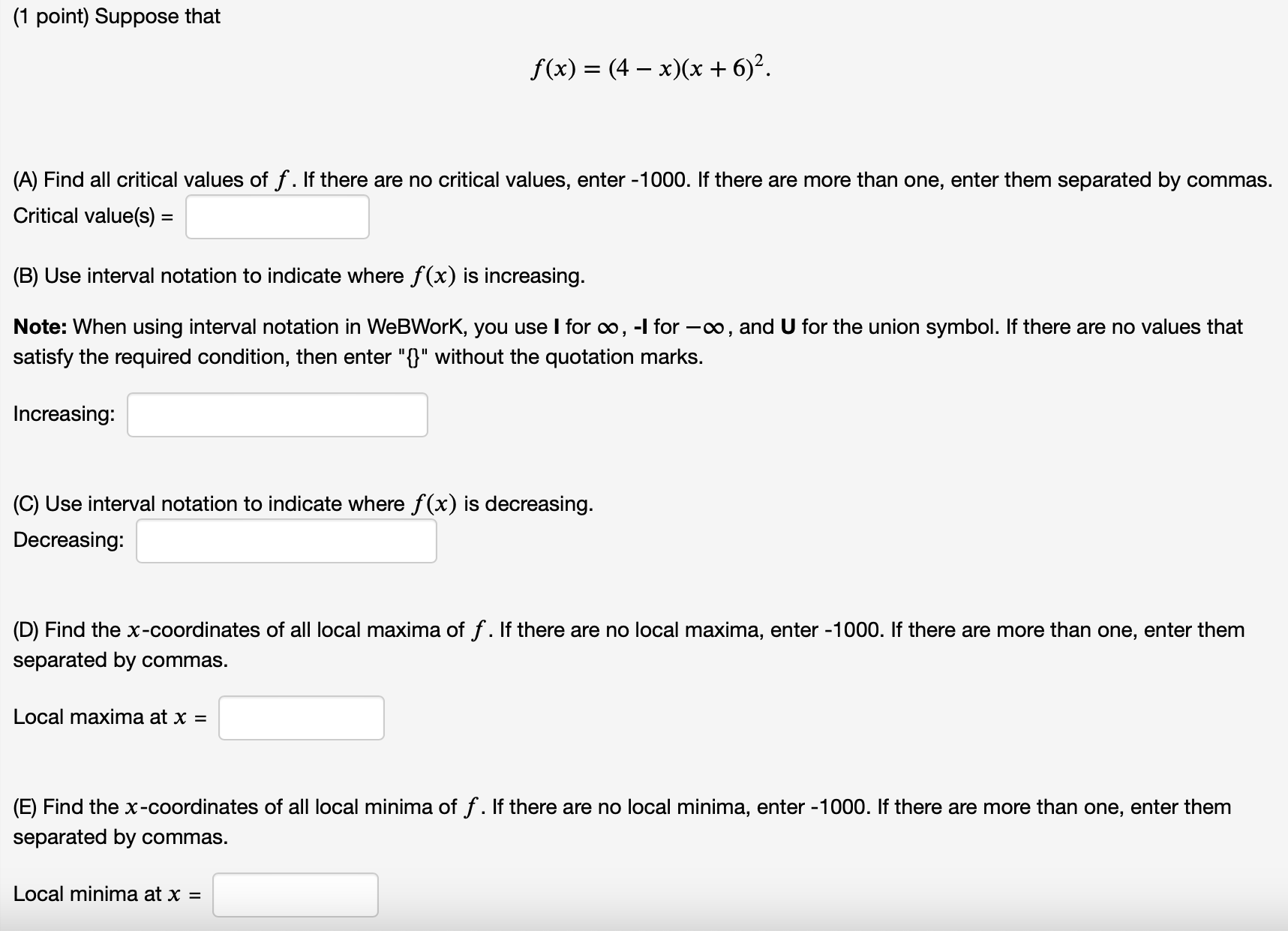Answered step by step
Verified Expert Solution
Question
1 Approved Answer
(1 point) Suppose that - f(x) = (4 x)(x + 6). (A) Find all critical values of f. If there are no critical values,

(1 point) Suppose that - f(x) = (4 x)(x + 6). (A) Find all critical values of f. If there are no critical values, enter -1000. If there are more than one, enter them separated by commas. Critical value(s) = (B) Use interval notation to indicate where f(x) is increasing. Note: When using interval notation in WeBWorK, you use I for , -l for -, and U for the union symbol. If there are no values that satisfy the required condition, then enter "{}" without the quotation marks. Increasing: (C) Use interval notation to indicate where f(x) is decreasing. Decreasing: (D) Find the x-coordinates of all local maxima of f. If there are no local maxima, enter -1000. If there are more than one, enter them separated by commas. Local maxima at x = (E) Find the x-coordinates of all local minima of f. If there are no local minima, enter -1000. If there are more than one, enter them separated by commas. Local minima at x =
Step by Step Solution
There are 3 Steps involved in it
Step: 1

Get Instant Access to Expert-Tailored Solutions
See step-by-step solutions with expert insights and AI powered tools for academic success
Step: 2

Step: 3

Ace Your Homework with AI
Get the answers you need in no time with our AI-driven, step-by-step assistance
Get Started


